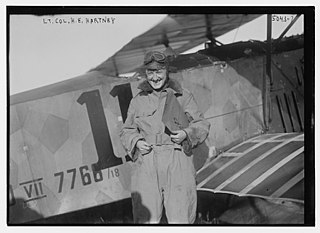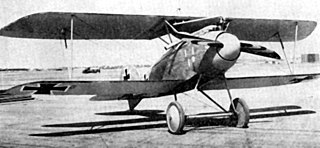Captain Carleton Main Clement MC was a Canadian First World War flying ace officially credited with 14 victories despite being handicapped by flying an obsolete plane.
Group Captain Geoffrey Hilton "Beery" Bowman, was an English World War I fighter ace credited with 32 victories. After attaining the rank of major in the Royal Flying Corps, he later became a group captain in the Royal Air Force.
Captain Frederick James Harry Thayre was a British two-seater flying ace in World War I who, in conjunction with his observer-gunners, was credited with twenty aerial victories.
Captain Dennis Latimer was a British World War I flying ace notable for achieving twenty-eight aerial victories, all against enemy fighter aircraft.
Captain Harry George Ernest Luchford was an English World War I pilot credited with 24 victories. He was notable for scoring his first 11 victories in three months while piloting an obsolete double-seated FE.2 pusher aircraft.
Second lieutenant James Robert Smith was a World War I flying ace credited with five aerial victories.
Flying Officer Giles Noble Blennerhassett was an Irish World War I flying ace credited with eight aerial victories while serving as an observer/gunner in No. 18 Squadron, Royal Flying Corps.

Harold Evans Hartney was a Canadian-born World War I flying ace with the United States Army Air Service, credited with seven confirmed and one unconfirmed aerial victories.

Captain-Commandant Fernand Maximillian Leon Jacquet was a World War I flying ace credited with seven aerial victories. He was the first Belgian pilot to score an aerial victory, on 17 April 1915, and became the first Belgian ace on 1 February 1917. He was also the first Belgian pilot to fly his king to the front, in 1917. Additionally, he was the only Belgian honored by the British with a Distinguished Flying Cross.
Captain Alexander Roulstone was a British World War I flying ace credited with eight aerial victories. He scored his victories, and downed two German aces, while handicapped by flying bombers.
Major John Bowley Quested was a First World War flying ace from England. He was credited with eight aerial victories, the most notable of which was over Gustav Leffers.
Lieutenant Colonel Alan Machin Wilkinson (1891–1972) was a British First World War flying ace credited with nineteen aerial victories. He was one of only about 25 pilots twice awarded the DSO during the war, five of whom were also holders of the Victoria Cross.
John J. Cowell, was an Irish soldier, airman and flying ace of the First World War. He was credited with sixteen aerial victories; fifteen of these were gained as an observer/gunner and one as a pilot, before he was killed in action.
Lieutenant Reginald Milburn Makepeace was a British World War I flying ace credited with 17 aerial victories.

Roy Cecil Phillipps, MC & Bar, DFC was an Australian fighter ace of World War I. He achieved fifteen victories in aerial combat, four of them in a single action on 12 June 1918. A grazier between the wars, he joined the Royal Australian Air Force (RAAF) in 1940 and was killed in a plane crash the following year.
Captain Ian Donald Roy McDonald was a British World War I flying ace credited with 20 aerial victories. Although born in the British West Indies, he returned to England to serve in the air force. After his successful career in combat, he spent a short while at home before returning to the colours. He served in Iraq postwar, and was executed there by insurgents.
Flight Lieutenant Robert Leslie Chidlaw-Roberts was a British World War I flying ace credited with ten aerial victories. During his aerial combat career, and in different dogfights, he engaged two famous German aces; he was one of the British pilots who downed Werner Voss, and on 9 January 1918, he shot down and killed Max Ritter von Muller.
Captain Edwin Louis Benbow was an English flying ace during the First World War, credited with eight victories, comprising six destroyed and one shared destroyed, and one 'out of control'. He was the only pilot to gain 'ace' status flying the Royal Aircraft Factory F.E.8 exclusively.
Captain Lancelot Lytton Richardson was an Australian flying ace during World War I. He was credited with seven confirmed aerial victories before his death in action on 13 April 1917.
General-major Hans-Eberhardt Gandert was a German professional soldier who began his 33-year military career in 1912. He learned to fly in the early days of World War I, went on to become a flying ace credited with eight aerial victories, including killing British ace Edwin Benbow, and ended the war in command of a fighter group. In the wake of Germany's defeat, he would serve in the German Army until 1934. He would then transfer into the newly established Luftwaffe and serve in increasingly responsible posts until mid-World War II. He retired on 28 February 1945.







